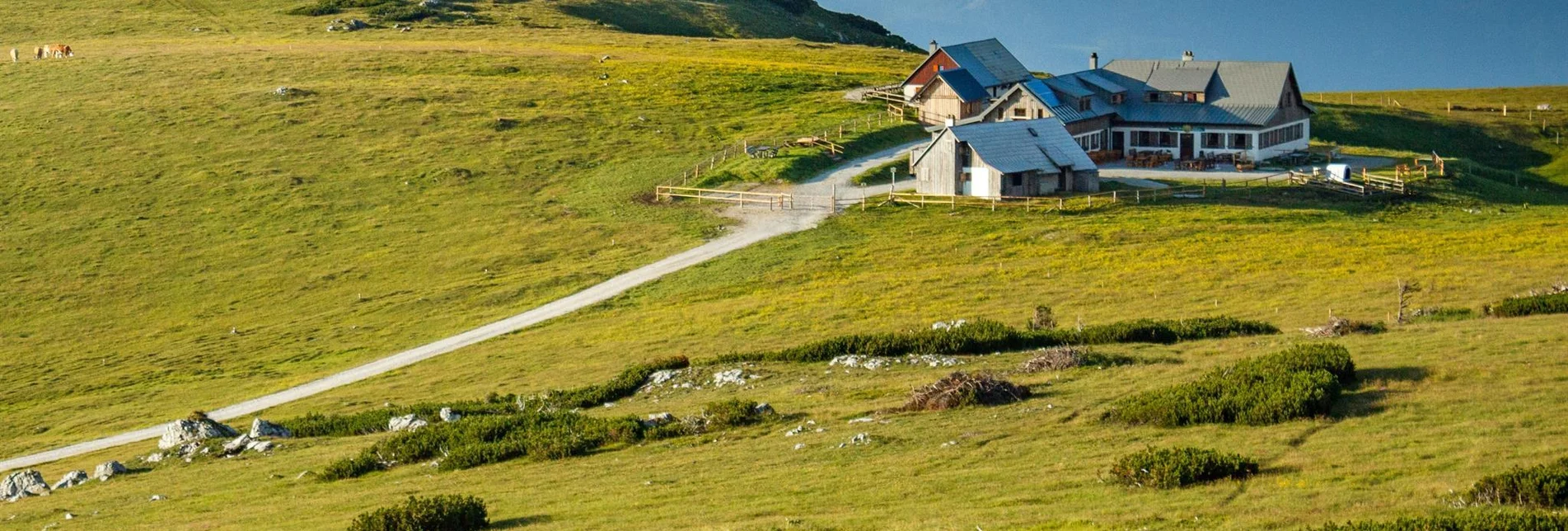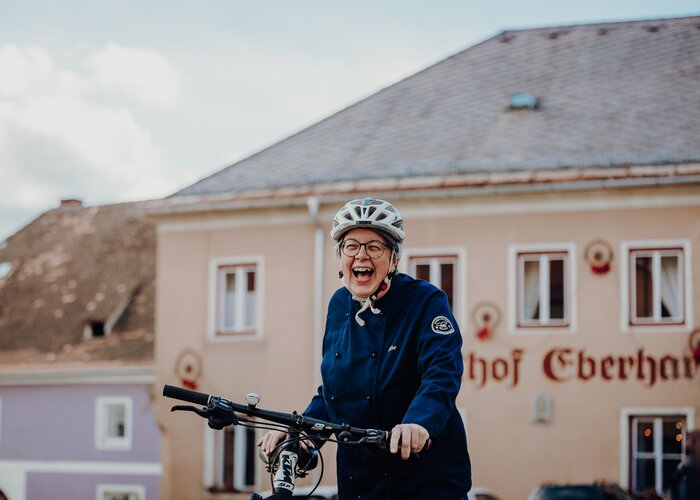

Etappe 08: BergZeitReise Rax - Karl Ludwig Haus - Mürzzuschlag
First we descend from Karl Ludwigaus, always with the wide plains of the Wiener becken in front of us, to Preiner Gscheid. This was once the site of today's Semmering Railway, hardly imaginable today! From Preiner Gscheid we turn left, already on the Lower Austrian side of the pass. But immediately we leave the road to the right on a forest path and walk, always slightly uphill, to the ridge between Kampalpe and Scheibe.
Over this (Scheibenhütte is only open on weekends) the well-marked path leads us downhill directly to Mürzzuschlag.
Characteristics
Best season
The tour in numbers
Map & downloads
More information
But first we start at the Karl Ludwigaus and descend, at the beginning along rope protections, on a wide path in numerous hairpin bends (hence the name "snake path") to the so-called Siebenbrunnerwiese.
Crossing this meadow (at its eastern edge the cozy Waxriegelhaus) we continue downhill over an old ski slope to Preiner Gscheid.
Here we cross the state road and start, already on the Lower Austrian side, at a wayside cross the ascent to the Große Scheibe.
Always in a southerly direction and exactly along the border between Lower Austria and Styria, we reach a crossroads at Drahte(Traten)kogel. Here we follow the wide path leading to the right (west) and thus come over the Schmidlruhe to the Beeralpl.
We could go straight down to Mürzzuschlag, but we would miss the beautifully situated Scheibenhütte.
Therefore, we continue to the right to the Große Scheibe and to the hut just below the summit.
Shortly we go back on the already known path and soon we turn left (sign) at the Beeralplstall in the direction of Mürzzuschlag.
A marked hiking trail leads us downhill to the former district town at the foot of the Styrian Semmering.
This region is particularly interesting from a geological point of view, because several large tectonic units meet here in a very small area. The rugged walls of the Rax, one of the last bastions of the limestone high Alps, contrast with the green mountains of the slate Alps (graywacke zone). Beyond Drahtekogel (Tratenkogel) and Großer Scheibe, one finally dives into the eastern foothills of the Noric depression.
Mürzzuschlag, former district capital, lies at the confluence of the Mürz and Fröschnitz rivers. The water of the rivers shaped this place, as it powered the numerous iron hammers that crushed iron here for centuries.
Mürzzuschlag is considered the cradle of skiing in Central Europe.
Toni Schruf, hotelier, representative of Styrian customs and forward thinker in a wide variety of fields, made a name for himself above all as a pioneer in skiing. Together with his friend Max Kleinoscheg from Graz, he recognized as early as 1890 the extensive possibilities offered by the use of the wooden boards then called "snowshoes" and both became the "first apostles of the white sport" in Central Europe.
Among other things, they organized the first international ski race in Central Europe in Mürzzuschlag as early as 1893.
It is also interesting to mention that Mürzzuschlag was able to establish itself as an air and high altitude health resort for a few years during that time, although it was the location of large industrial enterprises.
A commemorative plaque and a turbine model commemorate Viktor Kaplan, a native of Mürzzuschlag, who worked on a special water turbine starting in 1910 and which is still used today in power generation worldwide. Around the same time, Max Mauermann developed the first stainless steel at the local Bleckmann steelworks.
The Styria Tours app, available for free on Google Play and in the App Store (Android, iOS), offers detailed first-hand information: short facts (length, duration, difficulty, ascent and descent in altitude meters, ratings), map, route descriptions, altimeter, compass, summit finder, navigation along the tour. In addition, you can create your personal favorites list of favorite tours and points, save tours and destinations offline, play on social media channels and more.With the BusBahnBim app from Verbundlinie, timetable information has never been easier: all bus, train and streetcar connections in Austria can be queried by entering locations and/or addresses, stops or important points. The app is available as a free app for smartphones (Android, iOS) - on Google Play and in the App Store.
Free Pocket Card hiking route "From glacier to wine" can be found at www.steiermark.com hiking map BergZeitReise durch die Hochsteiermark can be found at www.hochsteiermark.at , compass WK212 Hochschwab, Mariazell, Eisenwurzen www.steiermark.com/buecher Freytag &Berndt WK41 Hochschwab - Veitschalpe - Eisenerz - Bruck an der Mur www.steiermark.com/buecher Hiking guide "BergZeitReise", available in the webshop Hochsteiermark, in the office of the TV Hochsteiermark and in well-stocked bookstores.










